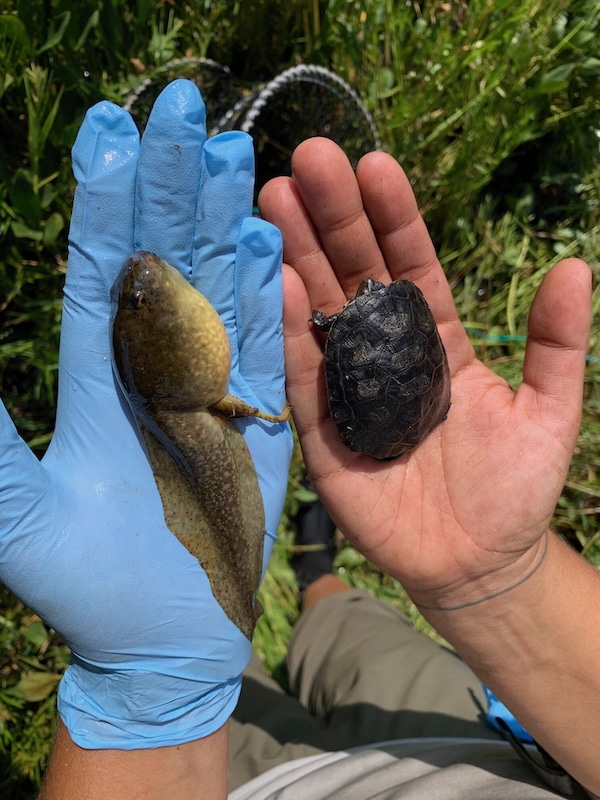This post was originally published on Eco Watch
By reversing a takeover by non-native species, native species have a chance at recovery in their natural habitats, according to a new study led by scientists from the University of California, Davis (UC Davis).
The study, published in the journal Biological Conservation, explored how removing invasive bullfrogs could affect the native western pond turtles, which have experienced a major decline in their range. As UC Davis reported, the turtles have disappeared from about half of their original range.
Some threats to the western pond turtles come from habitat destruction, development, pollution and disease, but invasive species are also a major threat, according to the Center for Biological Diversity. Reed canary grass and other invasive plants make it more difficult for turtles to find their nesting sites. Non-native animals such as bullfrogs, red-eared slider turtle and largemouth bass also pose threats by increasing competition for food, while bullfrogs prey on the pond turtles, furthering their decline.
An American bullfrog tadpole, left, is bigger than the young native northwestern pond turtle in this photo. Bullfrogs often prey on native turtles in the western U.S., contributing to their decline. Sidney Woodruff / UC Davis
“One reason American bullfrogs are among the top worst globally introduced pests is because they eat everything — anything that fits into their mouth,” Brian Todd, senior author of the study and a professor in the Department of Wildlife, Fish and Conservation Biology at UC Davis, said in a statement. “They’ve been causing declines to native species everywhere they’re introduced, which is around the world.”
From 2016 to 2022, researchers studied four sites in Yosemite National Park, two that maintained the bullfrog population and two that had the bullfrogs removed. To remove the bullfrogs, scientists captured bullfrog eggs and left them out to dry. For adult bullfrogs, they captured the frogs and euthanized them based on American Veterinary Medical Association guidelines.
In the ponds without bullfrogs, the researchers found that pond turtles were between two and 100 times more abundant compared to the ponds where bullfrogs remained.
The team also found that only larger, older pond turtles survived in the ponds with bullfrogs, with the turtles at these sites being up to 36% bigger and up to 97% heavier. The only juvenile pond turtles the researchers found at bullfrog-present sites were in the bullfrogs’ stomachs.

The field crew, including UC Davis scientists, hikes in the study area near Yosemite National Park. Sidney Woodruff / UC Davis
The eradication of the bullfrogs made the presence of other native animals, in addition to the pond turtles, more noticeable to researchers.
“As bullfrog presence declined, we started to hear other native frogs call and see native salamanders walking around,” said Sidney Woodruff, lead author of the study and Ph.D. candidate at UC Davis. “It’s nice to be able to go back to these sites and hear a chorus of native frogs calling again that previously would not have been heard.”
Although the authors noted that bullfrog eradication may not work at all ponds due to cost and time constraints, they explained that the study showed promise for using this approach in the most vulnerable conservation areas.
“While the challenges associated with invasive species removal are significant, our study shows the potential benefit of reversing species declines and restoring freshwater ecosystems,” they concluded.

Sidney Woodruff of UC Davis holds a northwestern pond turtle at their field site in Yosemite. Sidney Woodruff
The post Removal of Invasive Bullfrogs Leads to Increase of Native Pond Turtles in Yosemite, Study Finds appeared first on EcoWatch.





0 Comments